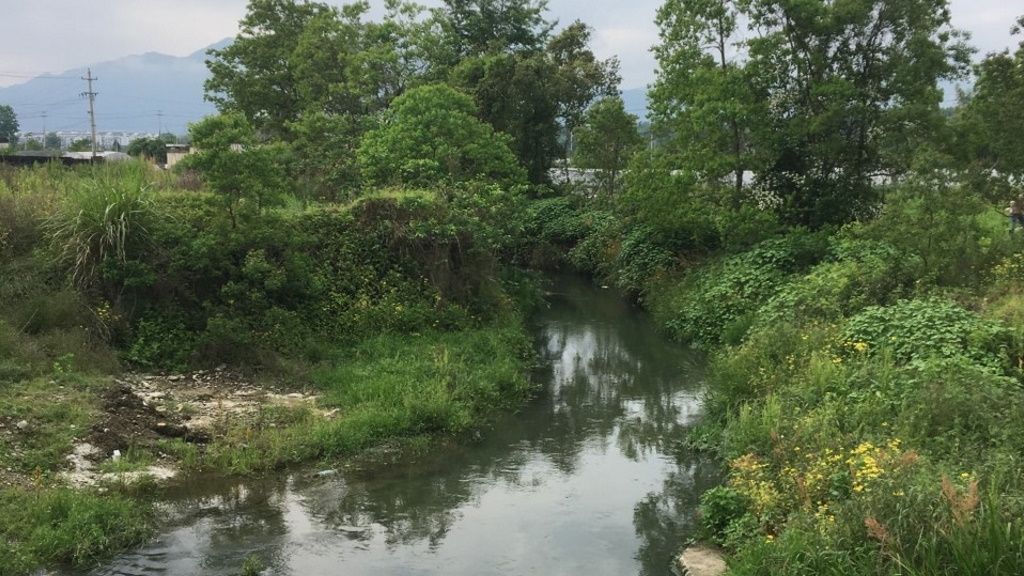Others
Cleaning up Xin’an River to Unleash a New Era of Growth in the PRC
Graham Dwyer 25 Nov 2021
Pollution threatens the Xin’an River, a river system within the Yangtze River Economic Belt that provides water supply to millions of households.
To clean up the Xin’an River, ADB, and KfW are helping the PRC build new water supply, sewage, and stormwater facilities and pilot green financing mechanisms in the urban and rural areas along the river.
The new water and sewage facilities and green investments will help clean up the Xin’an River, secure a reliable water supply for millions of residents, and improve people’s livelihoods.
The Yangtze River Economic Belt (YREB) holds a key place in the economy of the PRC. It accounts for more than 40% of the country’s population, 40% of its freshwater resources, and about 45% of its economic output. This resource, though, is under threat. Increasing pollution, degraded natural resources, and limited transport connectivity are constraining the growth of the YREB.
Pollution, in particular, is a threat to the Xin’an River, a river system within the YREB. Running from Huangshan city in Anhui province through Hangzhou municipality, the capital of Zhejiang province, the Xin’an River is life to the residents living along its banks—about 10 million people rely on it for water supply.
“The Xin’an River is an important source of drinking water and a strategic reserve water source for the whole Yangtze River Delta,” says Principal Water Resources Specialist for East Asia Mingyuan Fan. “Without a clean-up in and around the Xin’an River, water security in Huangshan and Hangzhou will be but a distant dream.”
Huangshan’s urban wastewater and sanitation facilities and sewage collection infrastructure is unable to control the pollution seeping into the river. Sewerage and stormwater overflow go directly to the river and its streams and waterways. Because of the sewer’s poor quality, groundwater likewise infiltrates the wastewater treatment systems. Rural wastewater also contaminates the river. About 75% of Huangshan’s 889 administrative villages lack wastewater treatment facilities. Thus, pollutants such as nitrogen and phosphorus from agriculture activities are discharged into the river, contaminating the water supply.
Cleaning up the Xin’an River
“The Xin’an River needs to be protected and conserved,” says Mr. Fan. “Without intervention, its deterioration would deprive millions of people of quality water supply.”
ADB, along with KfW, has embarked on a project that would ensure the YREB’s sustainable growth by promoting the ecological protection and green development of the Xin’an River. Through the Anhui Huangshan Xin’an River Ecological Protection and Green Development Project, ADB and KfW will be assisting the PRC in cleaning up the Xin’an River by addressing its major sources of pollution: insufficient urban sewerage systems and unsustainable agricultural practices.
New Infrastructure
To address pollution coming from urban sources, the project is upgrading sewage and stormwater facilities. It aims to repair wastewater sewers in Huangshan’s central district as well as in its other four county urban areas. It will also install stormwater drainage pipes. To complement this work, the project will be constructing river embankments to control floods. For rural areas, the project will be building decentralized wastewater treatment systems that can treat a minimum of 2 cubic meters per day. Moreover, it will install and repair rural water supply pipes to provide tap water to rural residences.
Green Approaches
The Anhui Huangshan Xin’an River Ecological Protection and Green Development Project will introduce innovative, and sustainable approaches to manage water pollution. These include helping farmers switch to improved organic fertilizers and biological pesticides. New green financing mechanisms will provide farmers financial incentives whenever they achieve pollution control targets using sustainable farming practices. It will also establish a green incentive fund to help small and medium-sized enterprises engaged in green businesses such as ecotourism and ecological agriculture.
Expected Results
By 2026, the project would have installed 176 kilometers (km) of water sewers and 71 km of stormwater drainage pipes in Huangshan’s urban areas. By project completion, it is also expected to construct 10 km of river embankments to mitigate floods. During their construction, about 465 jobs would be created, while 226 more jobs will be available during their operation. By the end of the project, the rural areas should see 85 decentralized wastewater treatment systems completed and connected to about 14,700 households. The project will also construct and repair a total of 100 km of rural water supply pipes that will be connected to about 3,250 households. As in urban areas, these activities will also generate jobs in rural areas—about 288 during construction and 140 during their operation.
The project is envisioned to infuse innovation into the protection and management of the Xin’an River by piloting green financing mechanisms. When completed, the project aims to provide green incentive mechanisms via cash grants to tea farmers who have achieved pollution control targets through the adoption of sustainable farming practices, and a green incentive fund to support small- and medium-sized enterprises involved in green business development that would give them further impetus to venture into and expand to ecological agriculture, eco-tourism, and pollution control.
Cleaning up the Xin’an River is a daunting but necessary task. This initiative would mean a reliable water supply for millions of people for years to come, a green development that ensures public health, and a robust economy for the PRC.
Author

Graham Dwyer
Principal Communications Specialist, Department of Communications, ADB
This article is reproduced from Asian Development Bank.


